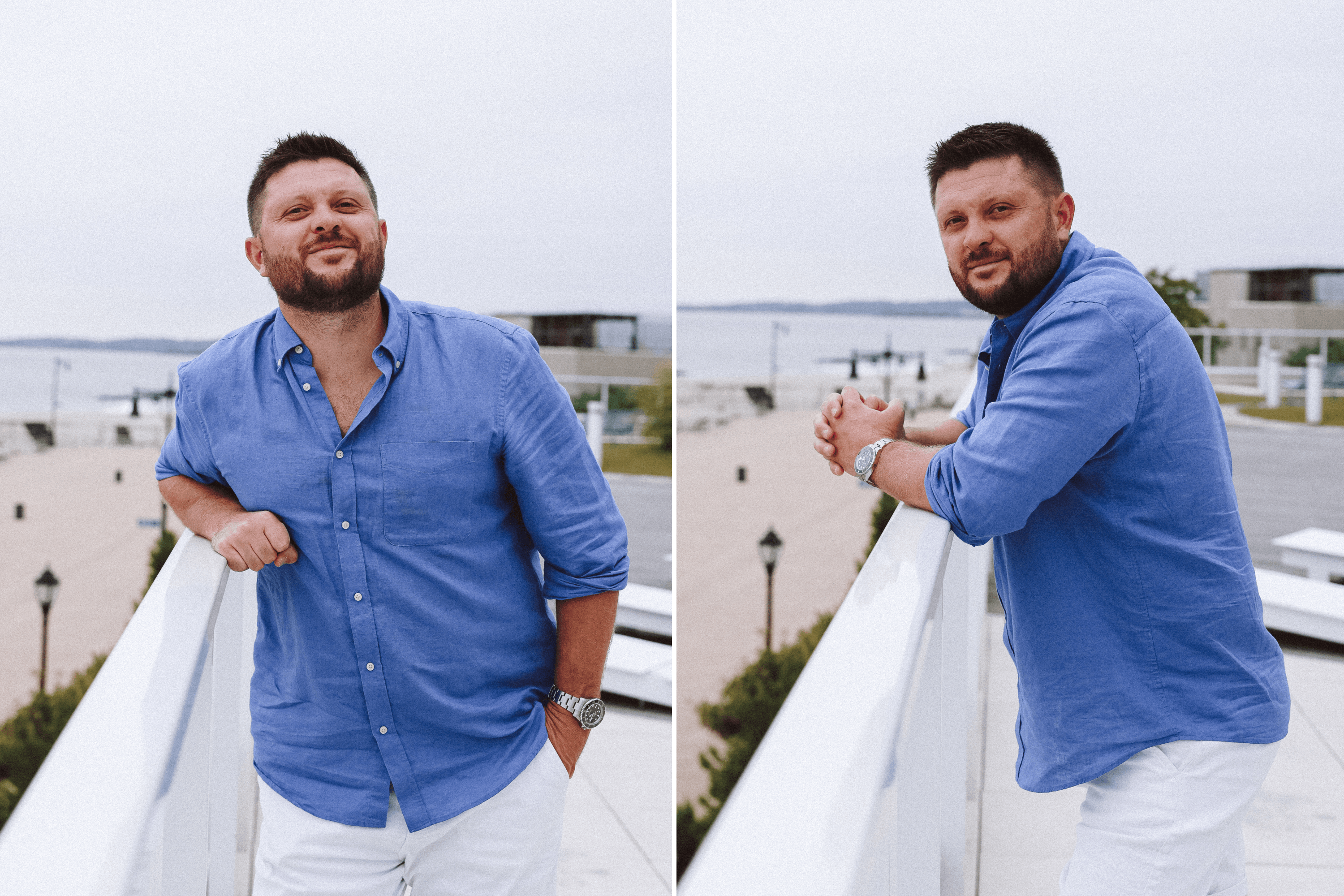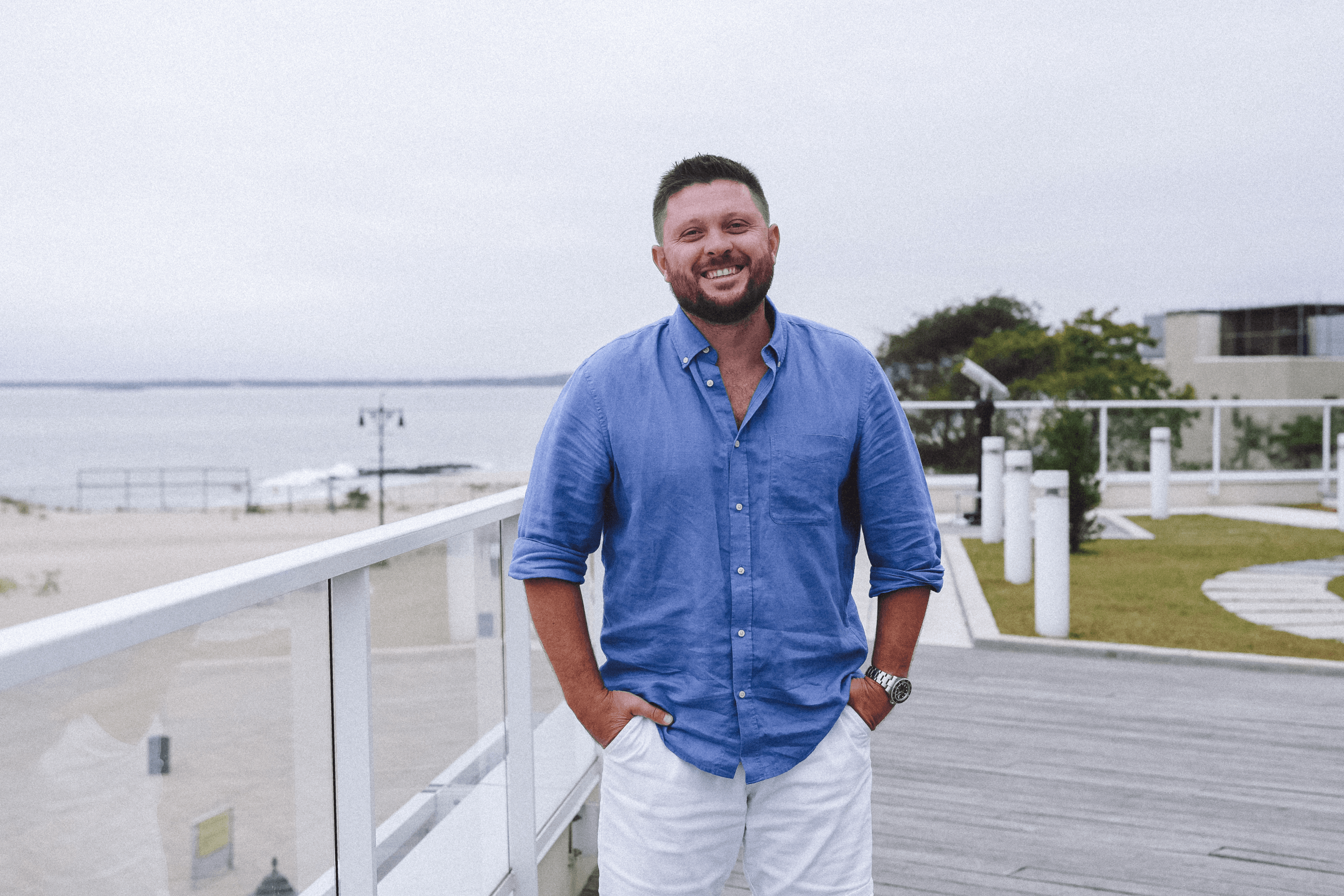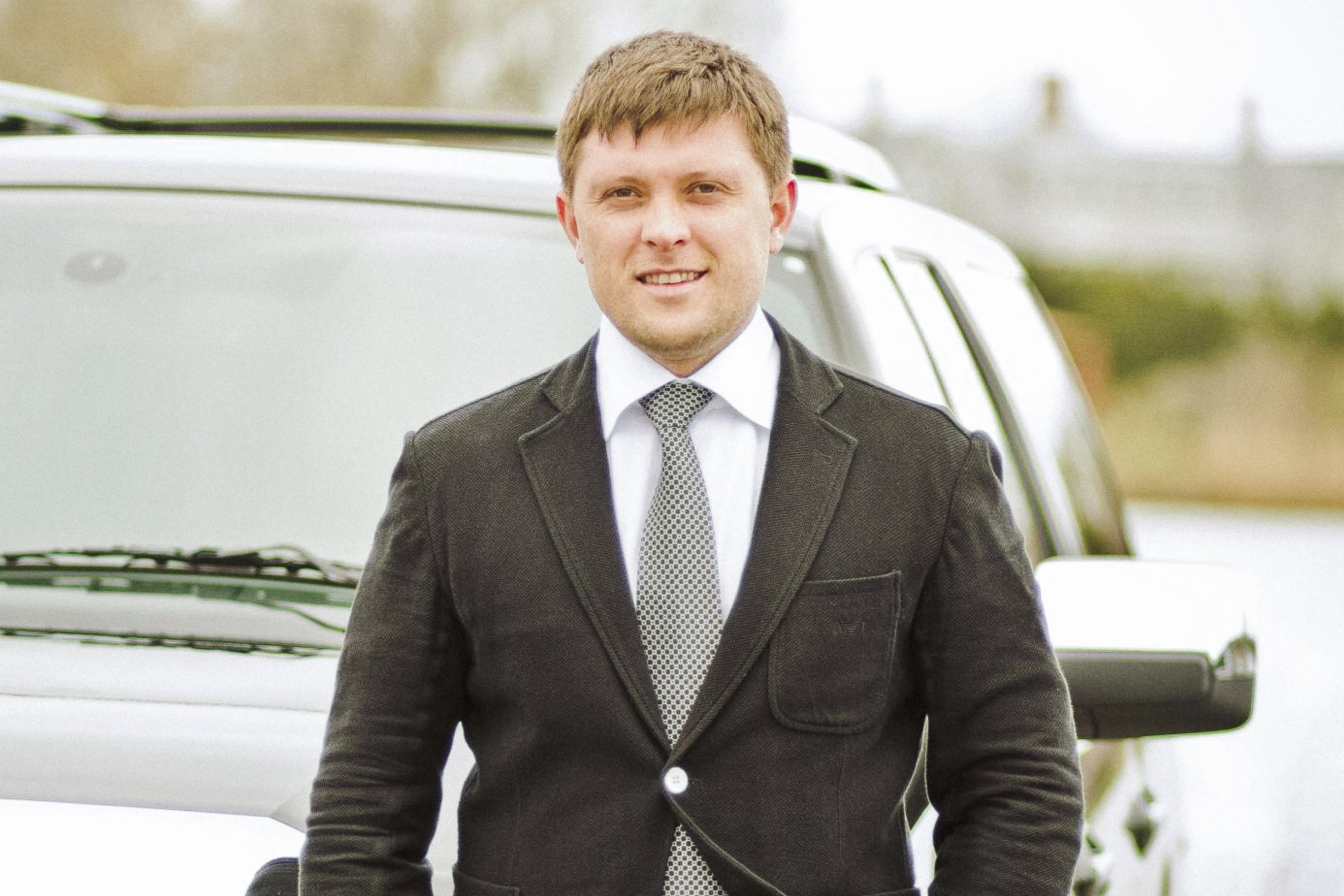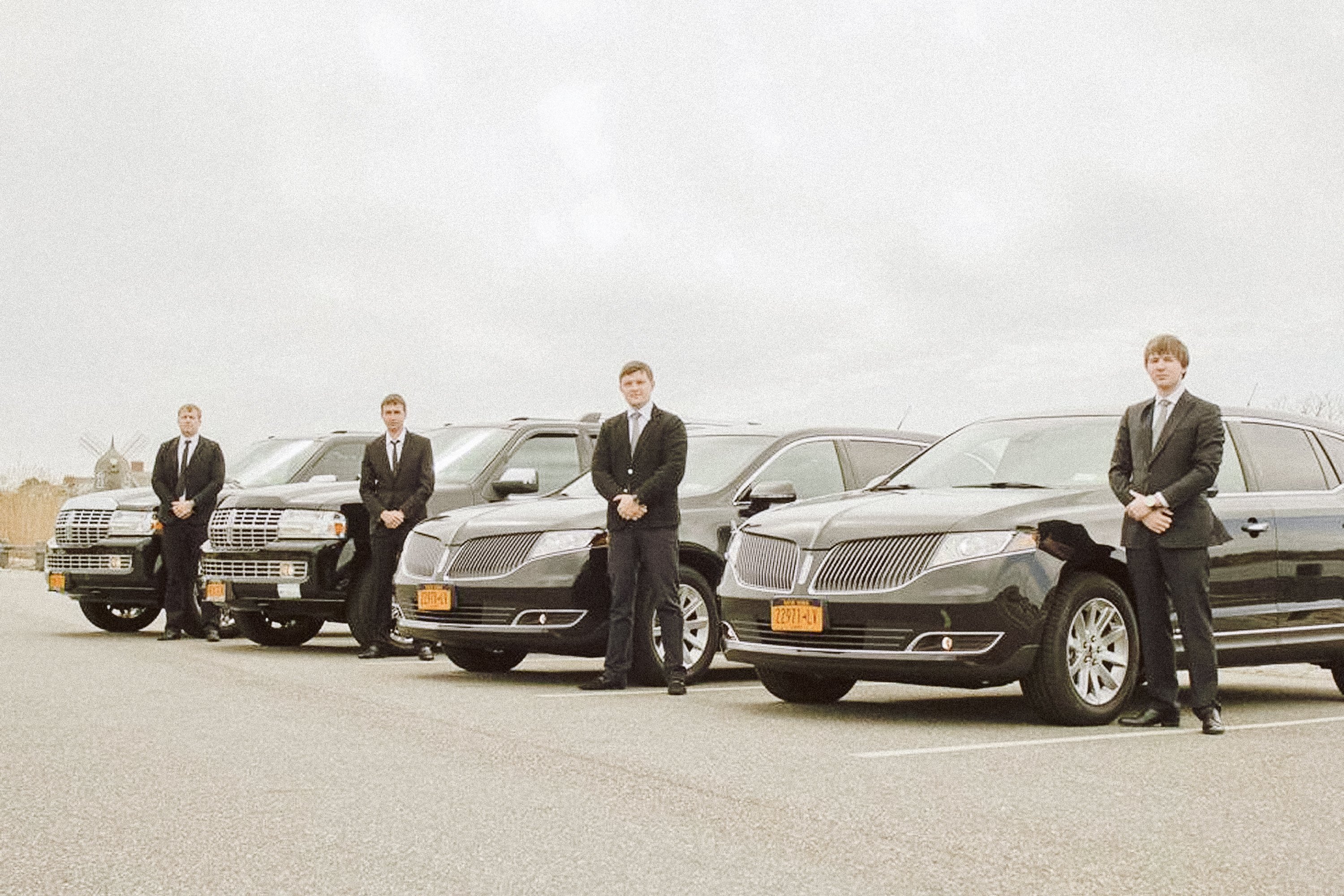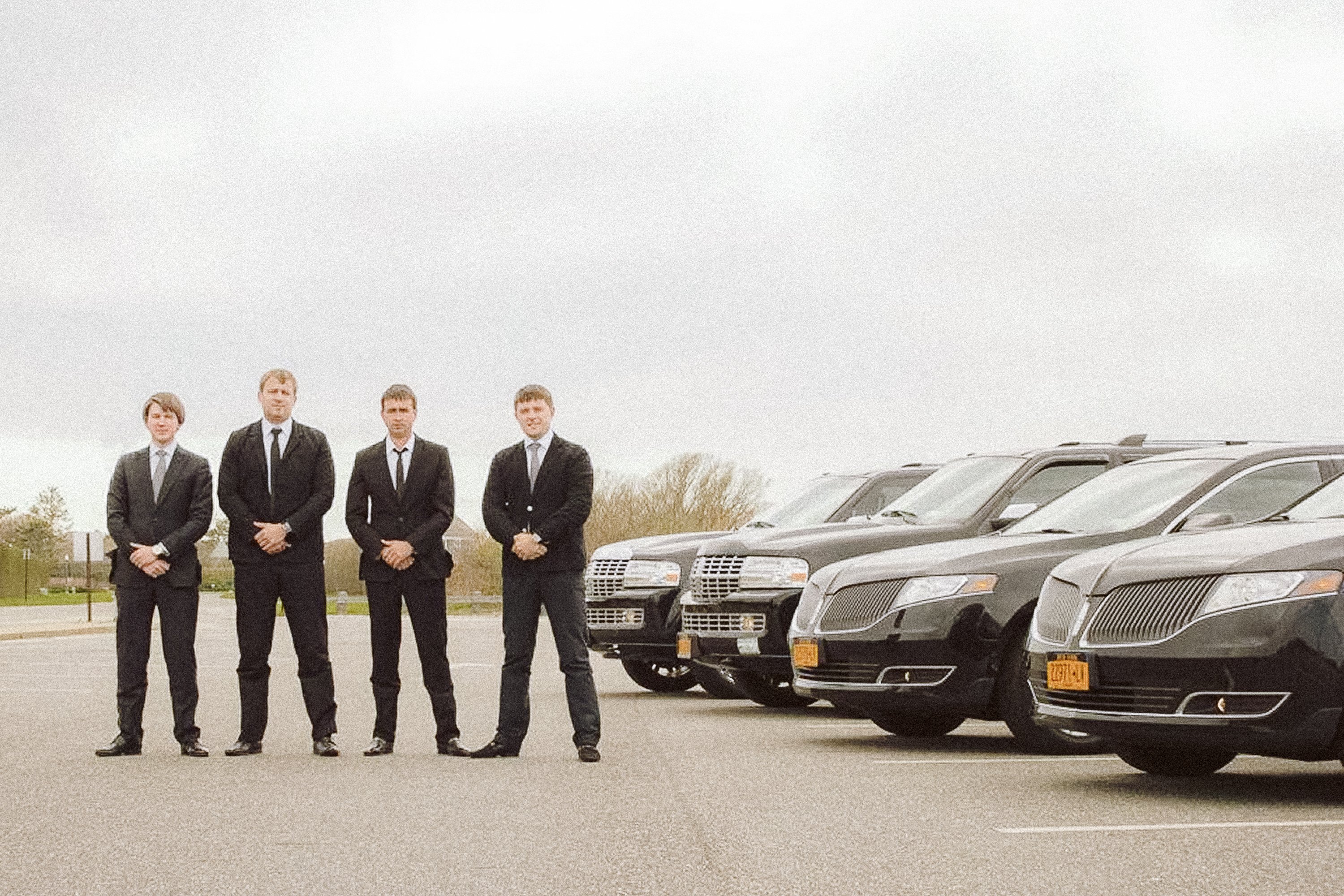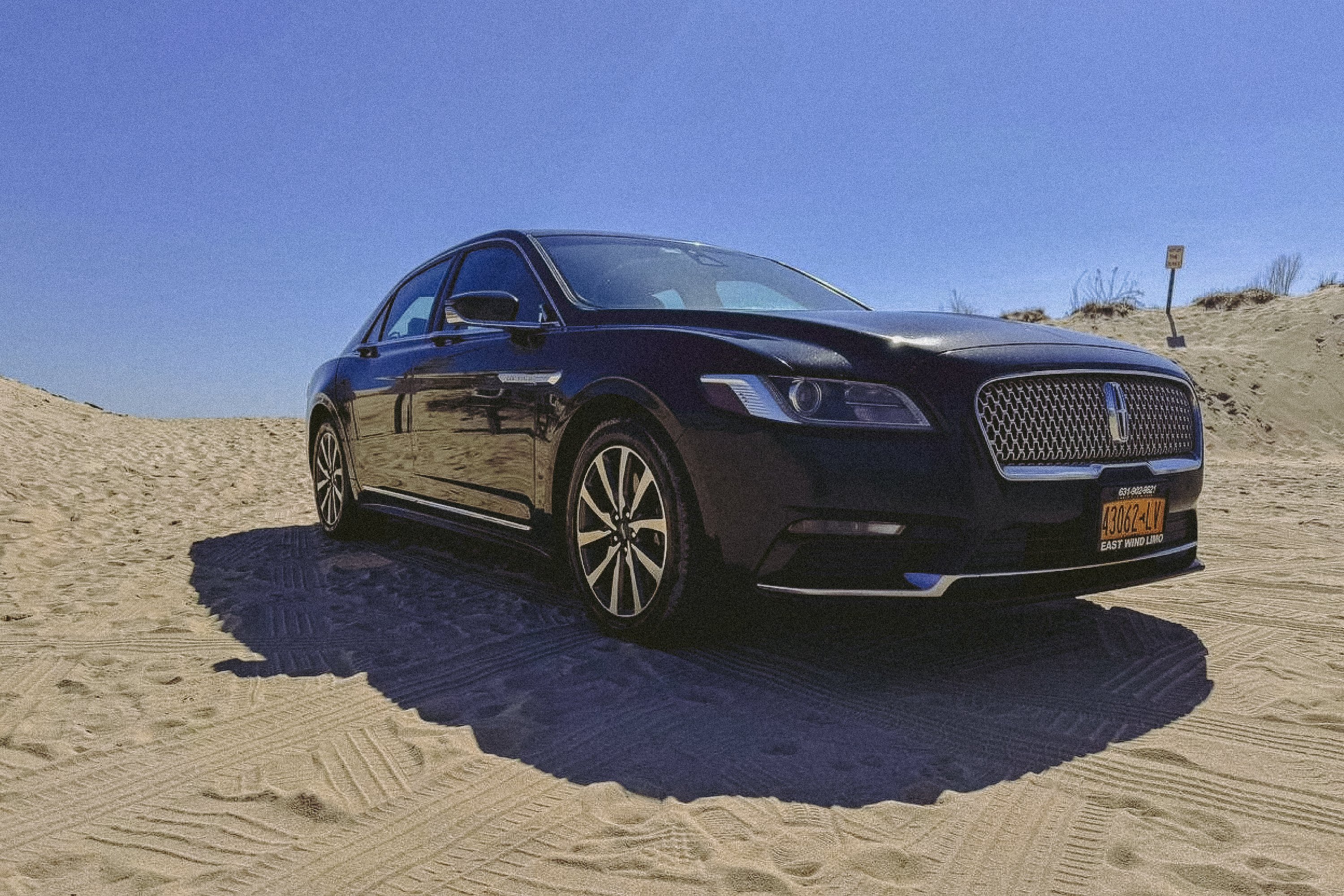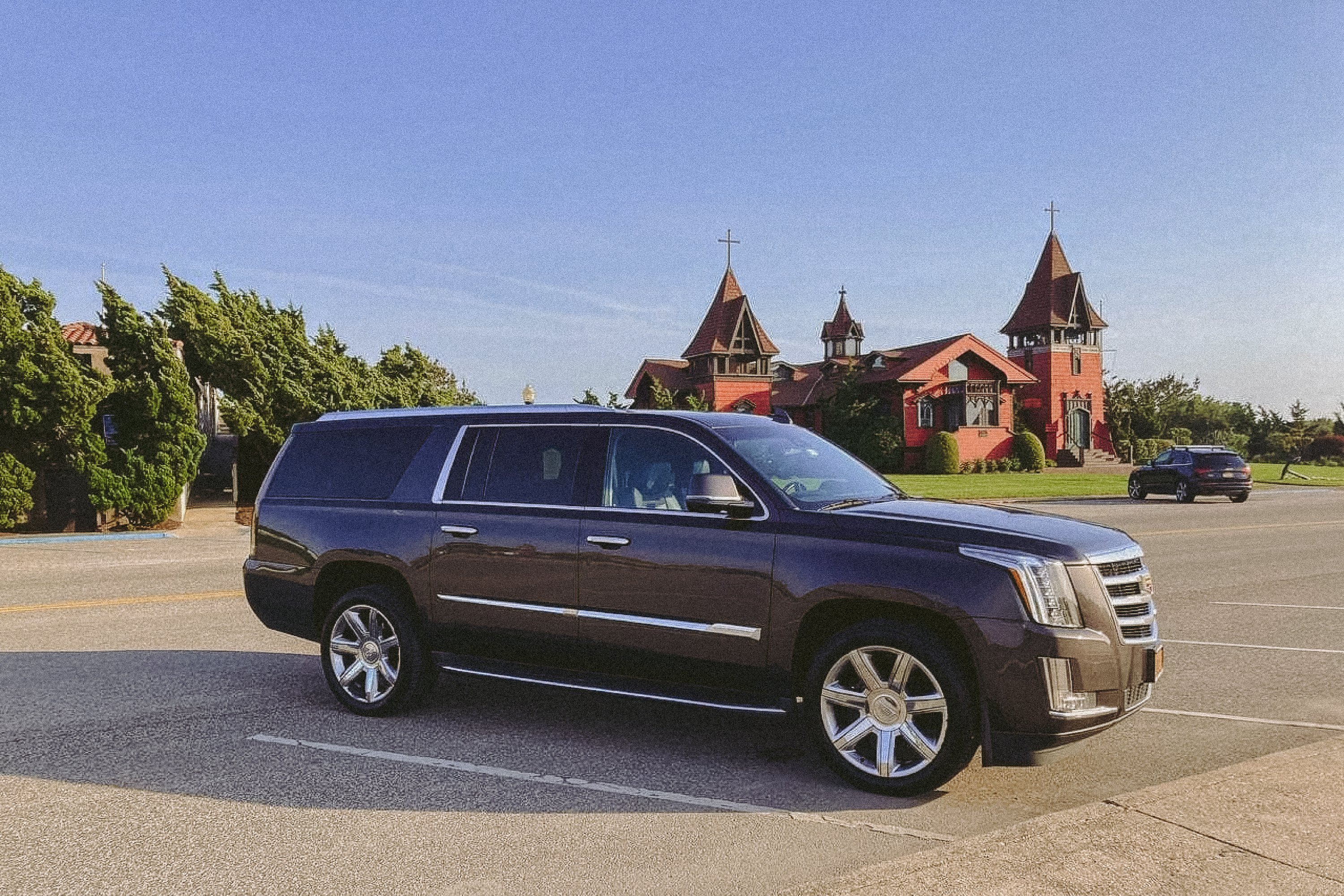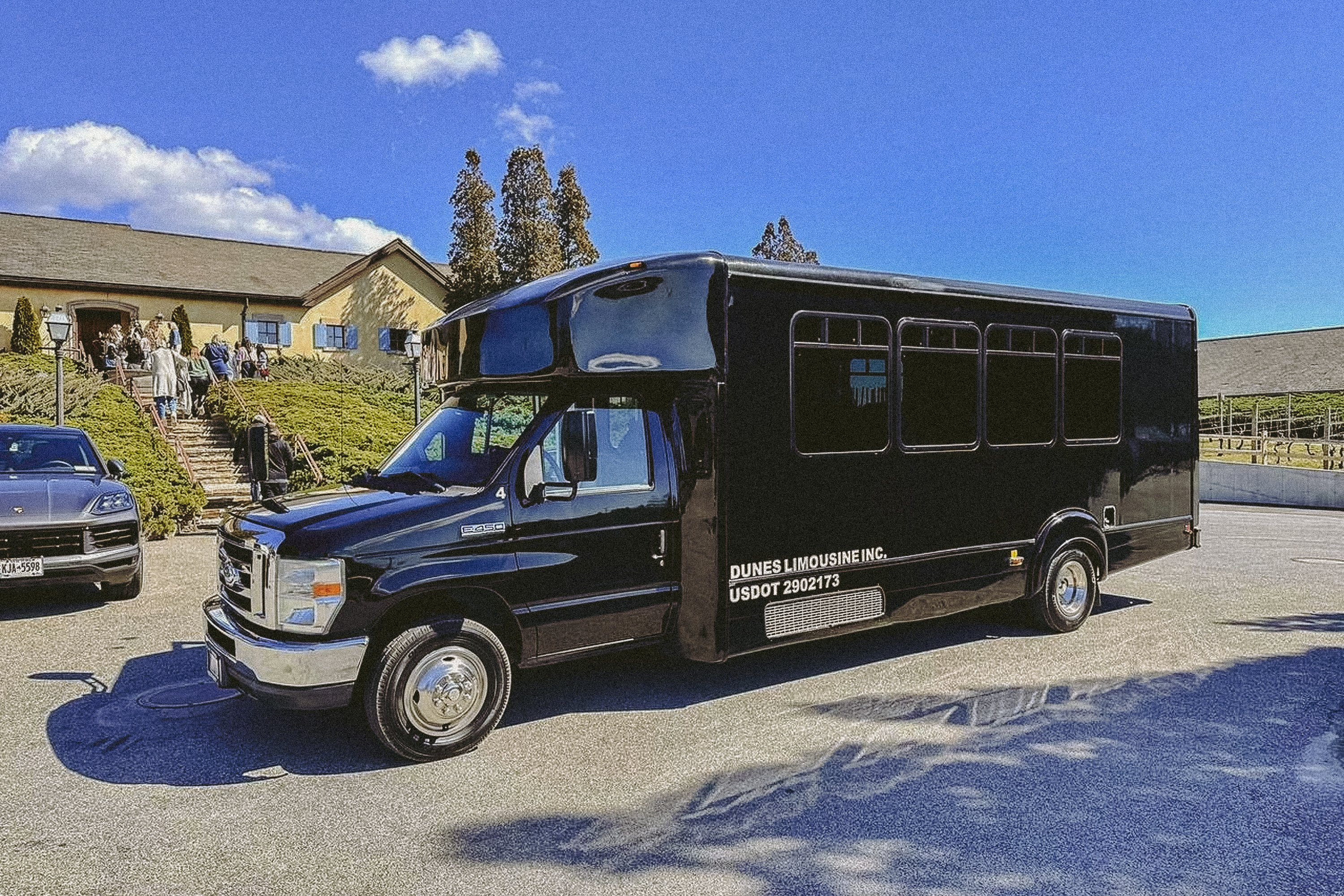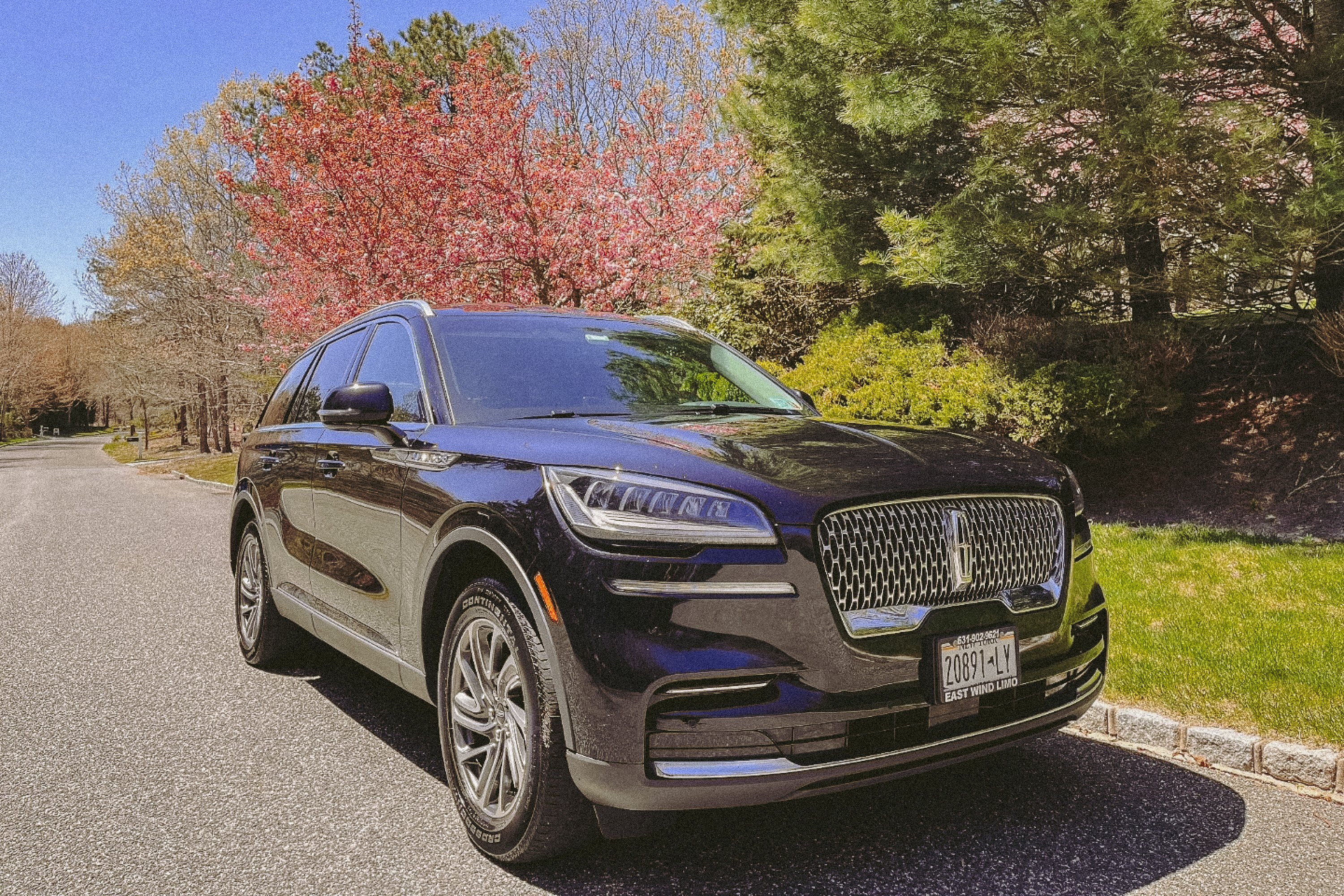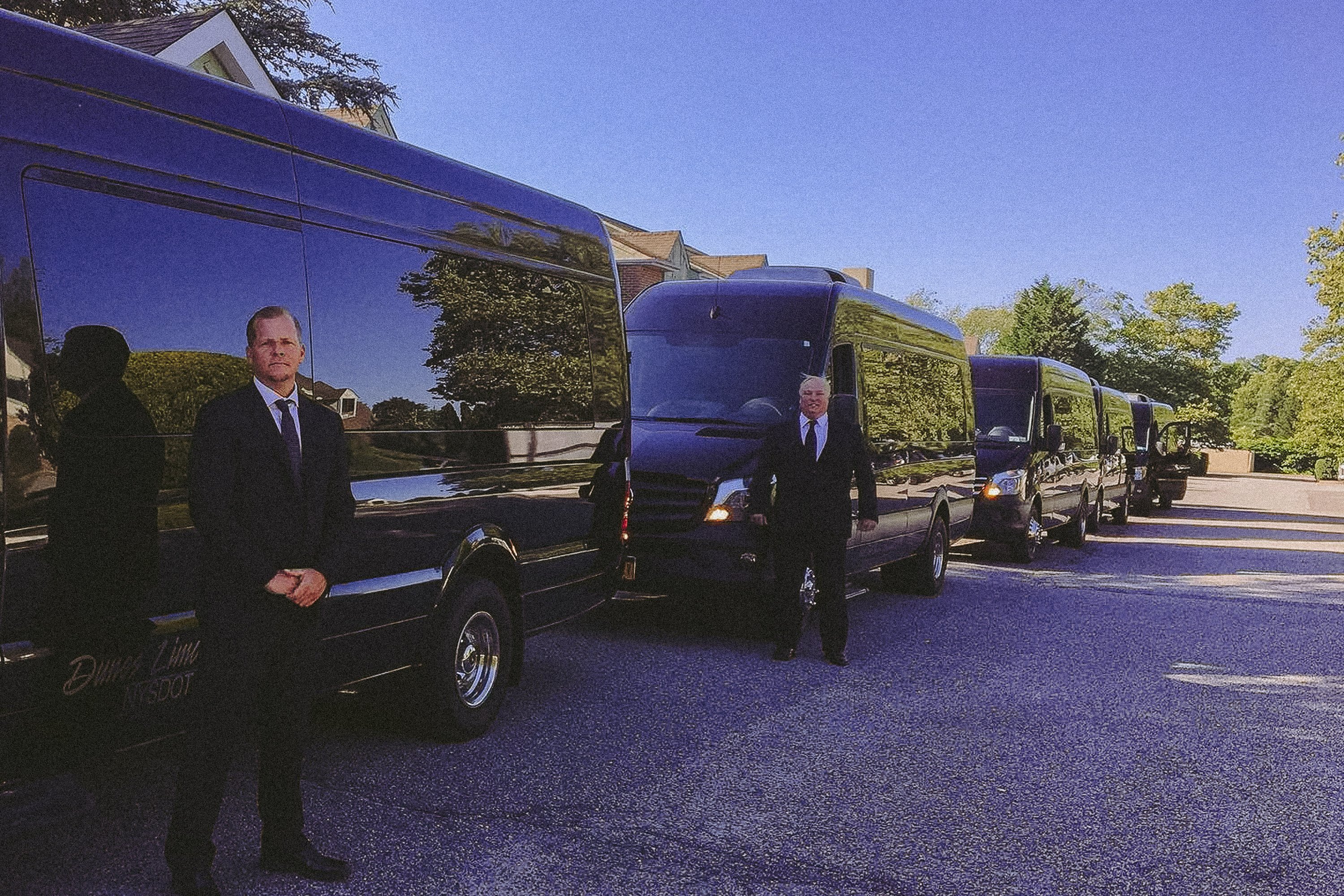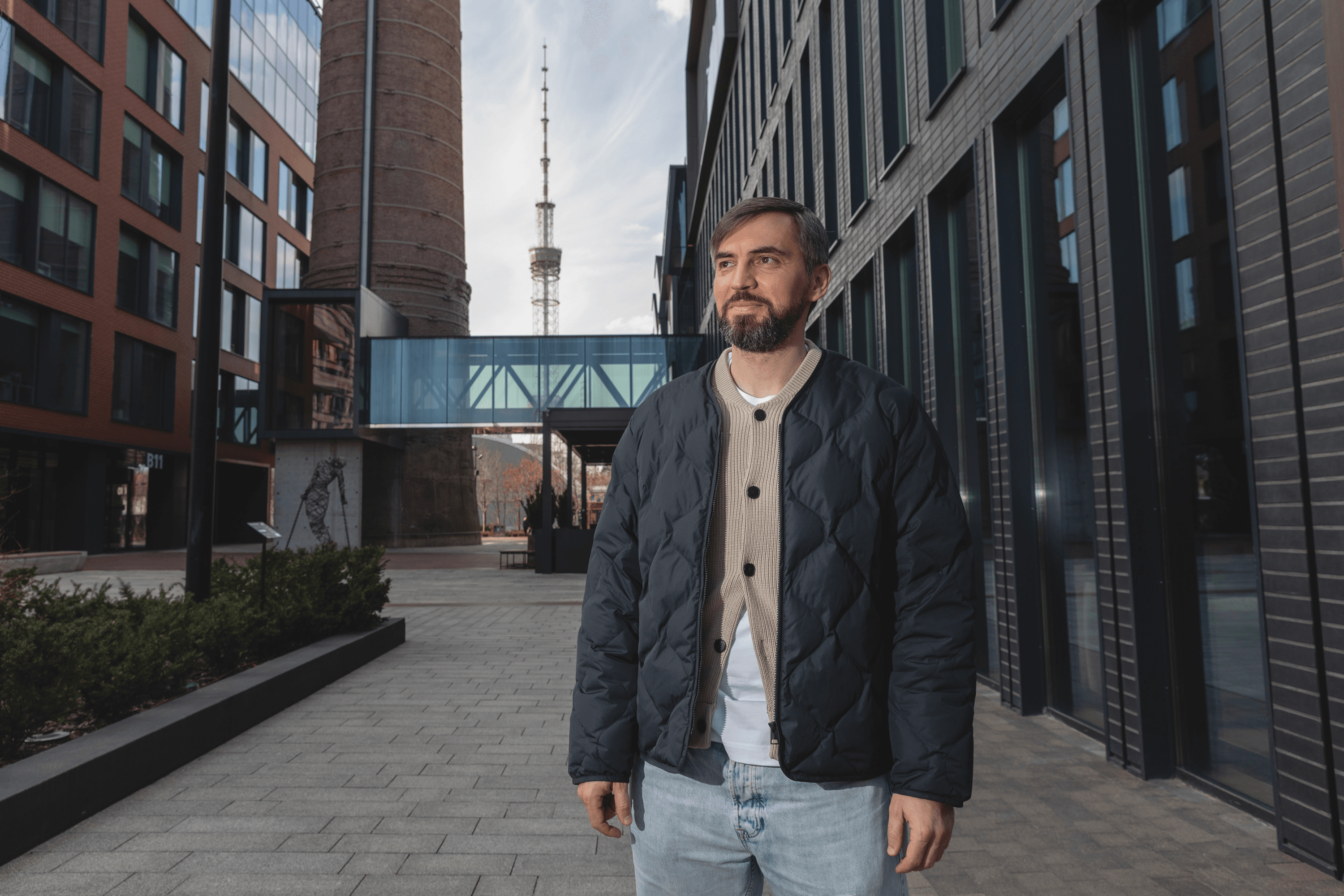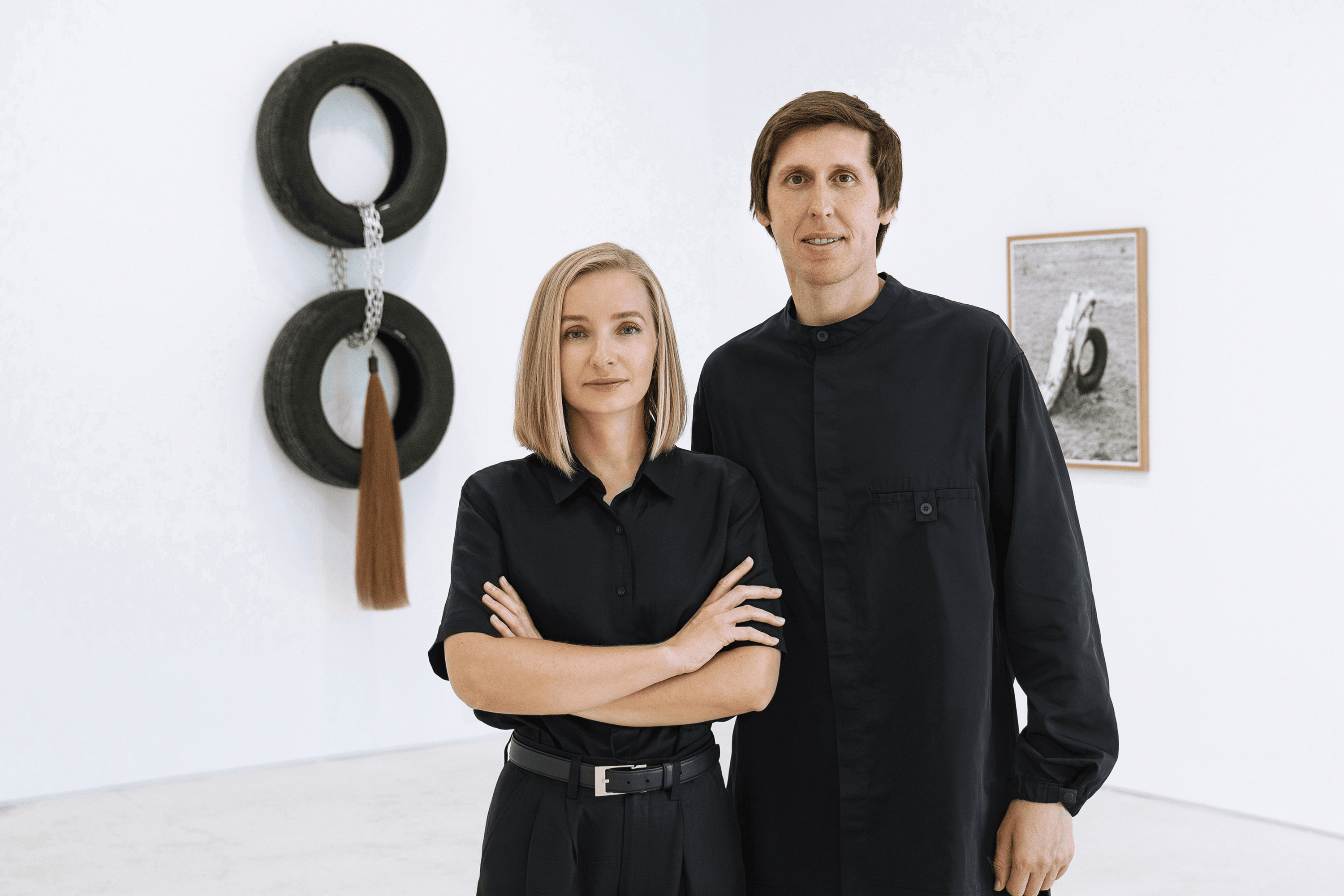Anton Nesterov is a near-perfect example of the famous “American Dream” come true. Back in 2004, he arrived in the U.S. on an exchange program from the industrial Ukrainian city of Zaporizhzhia and had to spend nights in a train station. Fast forward a few years, and he’s the founder of EWLimo — a luxury car service trusted by Sarah Jessica Parker, Richard Gere, and Rihanna. But the road to the “American Dream” wasn’t easy. Anton lived in a basement and a trailer, and at times worked without pay. Today, he owns several businesses — including wine tours and house construction in the Hamptons, one of New York State’s wealthiest areas.
YBBP journalist Masha Zhartovska met with Nesterov in New York. In the interview, he shares how to build a business, attract celebrity clients, and stay ahead of the competition.
How did you find your way to the U.S.?
I first came to the U.S. 20 years ago in 2004, through the Work and Travel program, which was very popular in Ukraine at the time. Students from all over the world would head to the United States on a J-1 visa with a pre-arranged job contract in hand.
I applied, and for an extra fee, the agency found me a job at a fish processing plant in Alaska. But before I even left, that offer fell through — the plant either cancelled the contract or went bankrupt. Then they offered me another optionб, this time at a supermarket chain.
When I arrived in New York, I didn’t speak a word of English. I flagged down some bald Russian-speaking taxi driver and showed him the address. He looked at it and said, “That supermarket doesn’t exist.” So, he dropped me off at the first supermarket he could find. The staff there said they weren’t hiring, especially not someone who couldn’t speak English. But they gave me the address of another supermarket in Southampton. That’s when I started spending my first nights at the train station. There was this little booth, half-covered, where I could sleep.
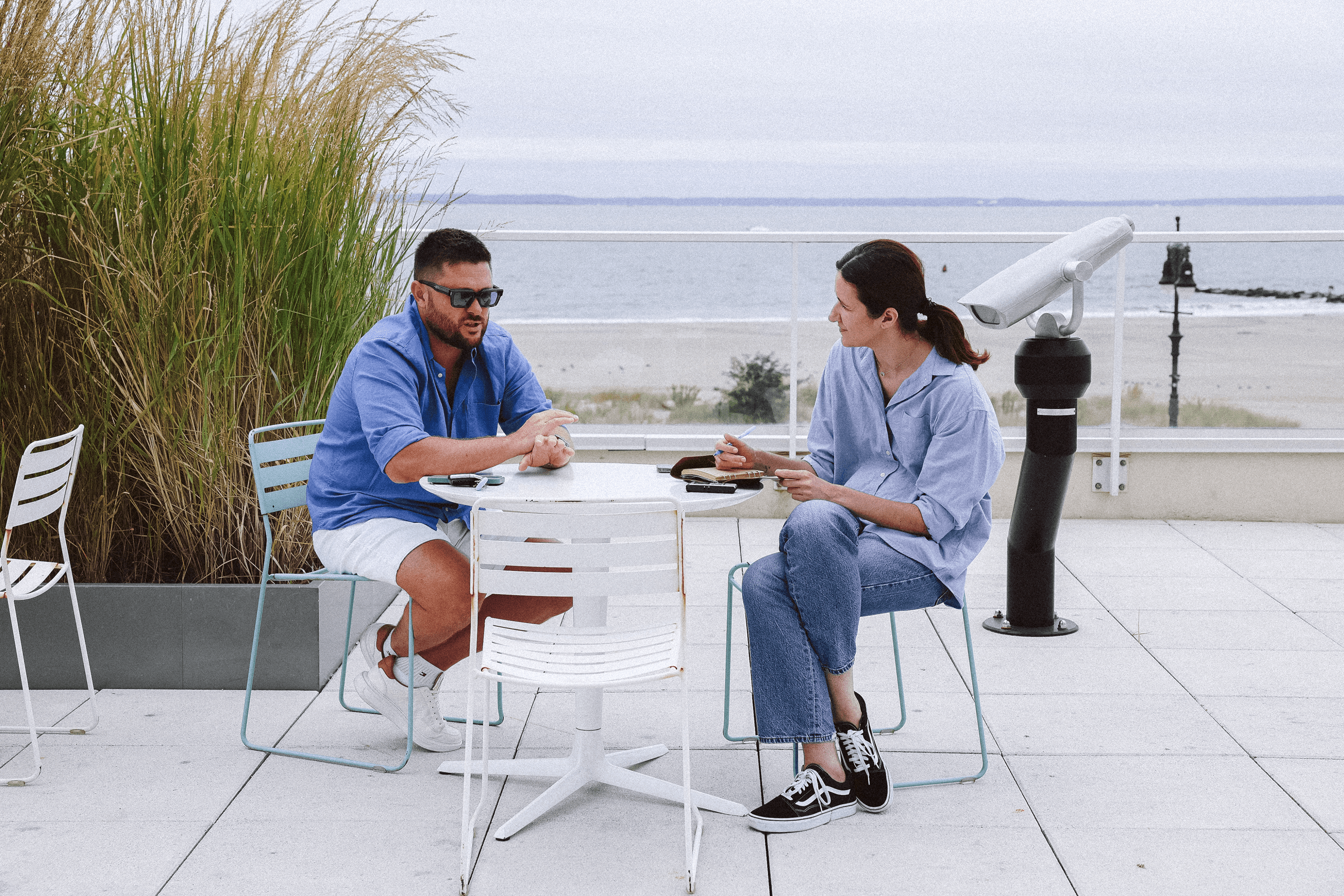
Why didn’t you go back or call the agency to tell them that the supermarket didn’t exist?
There wasn’t anyone I could call. I sent them a letter. But going back? — There wasn’t really anywhere to return to. My only hope was the supermarket address. I hoped they would hire me there. In the end, that’s what happened. After spending a few nights at the train station, I went to speak with the manager. They arranged for me to stay at a hotel and explained that I would stay there until I got my Social Security Number (SSN). I only understood this with the help of a dictionary. They covered the hotel costs, but the cost would come out of my future paycheques, essentially a debt.
Why would they do that? What was in it for them?
Work in the Hamptons is seasonal, and they needed extra help for the summer rush. They were hiring many people like me, though most spoke better English. Everyone stayed at a hotel for the first week or two on credit, and then you’d work off the cost once you started earning.
So, you end up getting a job at the supermarket, right?
No, actually, I didn’t end up working at that supermarket. I stayed at the hotel for a week, did some simple math, $200 per night — already more than a thousand dollars in debt. Three other guys from Mykolaiv were there with me. We decided to bolt — we left the hotel and hit the streets looking for work. That’s how we ended up in Southampton, going around and asking people. One of us spoke a bit of English, so we even stopped some police officers and asked where we might find odd jobs and a place to stay. One of the cops pointed us to two girls who worked at a restaurant — it was the pretty famous today 75 Main. They let us crash on the second floor above the restaurant. We stayed there and kept looking for work. A week passed, then another — still no job. Eventually, the restaurant owner found out we were living there and kicked us out.
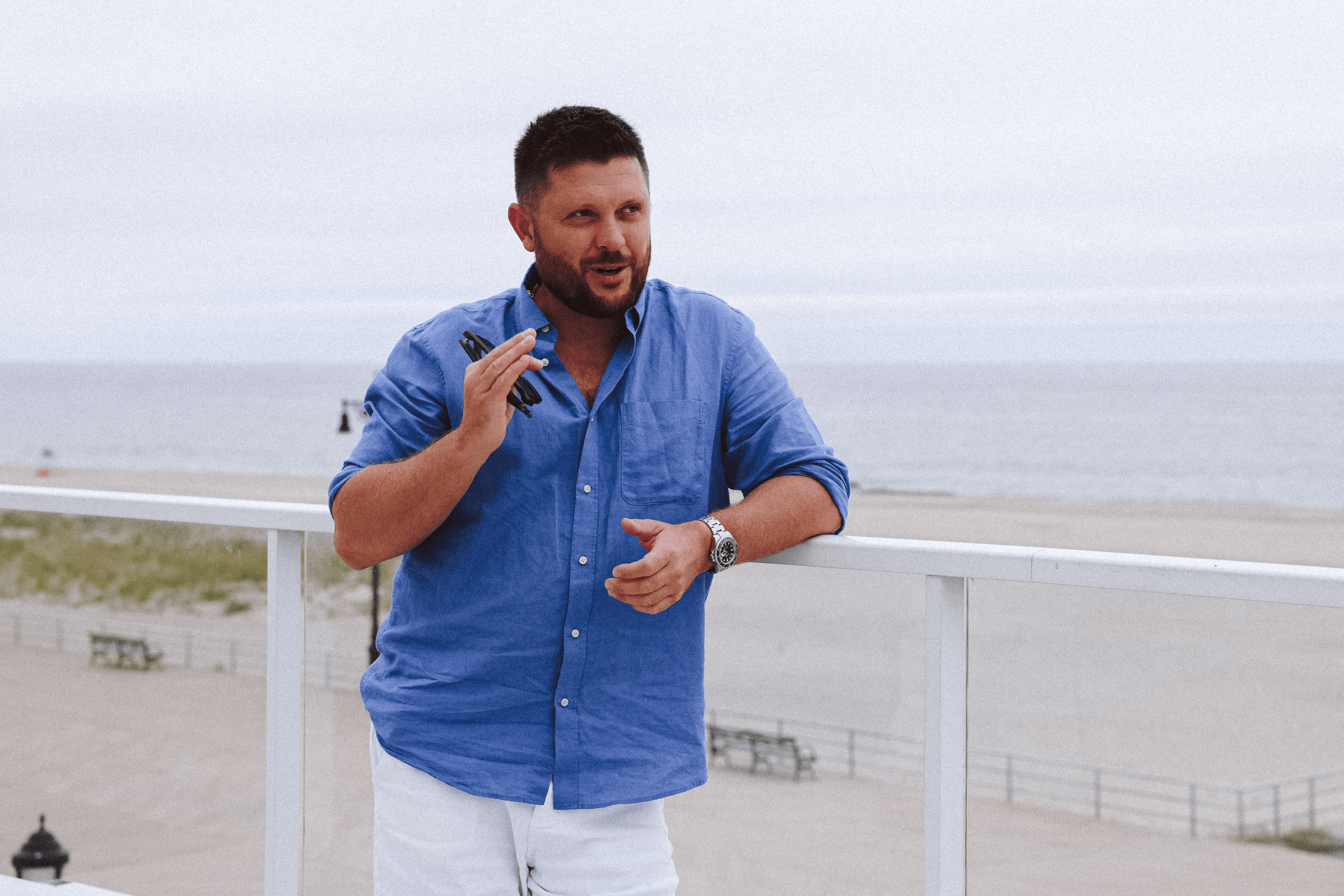
One day we were walking along the beach, arguing loudly. I was saying that when I’m back in Ukraine, I’d go straight to the agency that had sent me and have a really serious conversation with them. A passing woman overheard us, she turned out to be from Lithuania and stopped. She asked: “Guys, where are you from?” — “Ukraine.” — “Do you need a place to stay?” — “Yes.” She took all four of us in and gave us two rooms on the second floor of her house. She helped us find work at a Moving and Storage company in just five days. Two guys went to clean swimming pools, and another guy and I joined the moving company. One of them still lives in the same town as I do now and owns his own pool construction and maintenance business. The other two guys from Mykolaiv now live in Canada, and we still keep in touch.
Why did this woman decide to help you?
She was looking after an elderly man and living in his house. She was an immigrant herself. I imagine someone had once helped her. She overheard us arguing on the beach, realized we were having problems finding accommodation, and decided to offer help. I guess she ‘liked’ the way we were arguing. Of course, we paid her for the accommodation.
Why didn’t you stay longer?
I spent five months in the U.S. in 2004 and went back home. At the time, I wasn’t planning to immigrate — I didn’t have a contract, I didn’t know English, and no one was there to meet me. There were plenty of challenges. Back in Zaporizhzhia, I lived in an ordinary family, but I never lacked anything. So that first trip didn’t go the way I’d hoped, and I didn’t feel like going back [to the U.S.].
But you still ended up going back later.
At the time, I’d just split up with my girlfriend and was trying to start a parking lot business in Ukraine. But very quickly it became clear that if I wanted to get 150 spaces, I’d have to give 50 of them to the “right people” — firefighters, officials. I wasn’t willing to play by those rules, so I decided to go back to the U.S. In 2006, I returned with a clear intention to stay.
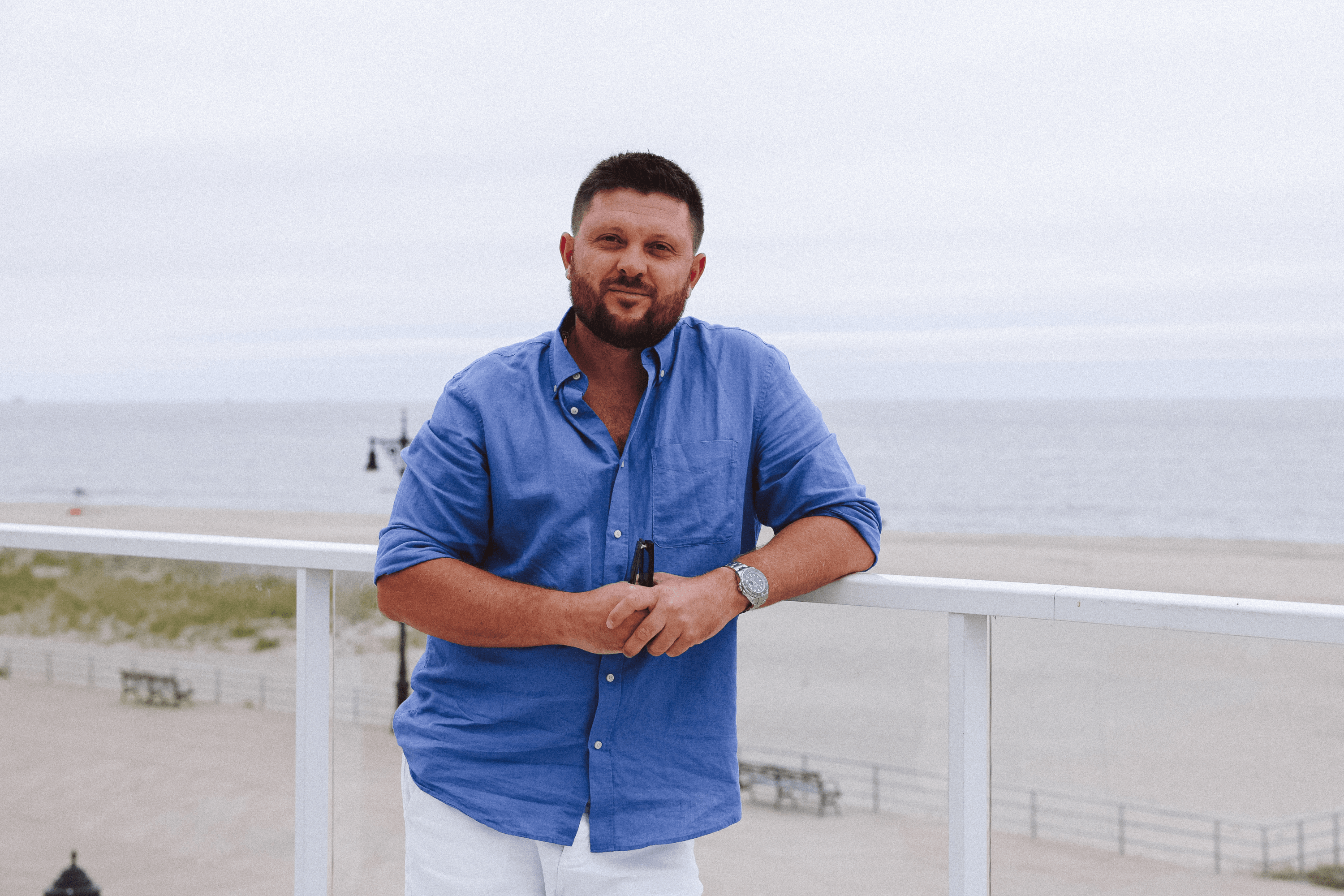
So, at first you were disappointed with America, then with Ukraine, and eventually went back to the States?
Exactly. There was disappointment on both sides. But I knew one thing for sure: even if I ended up working construction in the U.S., I’d be able to make a decent living.
Coming back in 2006 wasn’t easy either: no one was waiting for me here. There was a job at a moving company for me, but I still didn’t speak a word of English. I came with my friend Dmytro Voropaiev, now my business partner, he spoke good English. I thought this would help us quickly find a place to live, but it didn’t quite work out that way. We spent our first night sleeping at the train station, and another whole day struggling to find a place, and eventually, a Georgian man offered us a basement, sand on the floor and two fold-out beds. We lived there for a week. Then, guys from the moving company helped us find a trailer, which was a step up, though a small one.
How long did you work at the moving company? Did you learn English on the job?
Three years. No, I never formally studied English, it just came with time. I mostly worked with locals at the moving company, who practically called me their son. We had a great relationship, and it was probably the first time they’d kept someone with semi-legal status on the team, just because I was a good worker.
Why did you leave the moving company?
At some point, I realized my English was good enough — I could speak and understand it. After three years at the moving company, I got a part-time job at a limo service, so I was juggling both jobs. Later, my boss at the limo service offered me a full-time position and promised better pay, and it was indeed more, so I agreed.
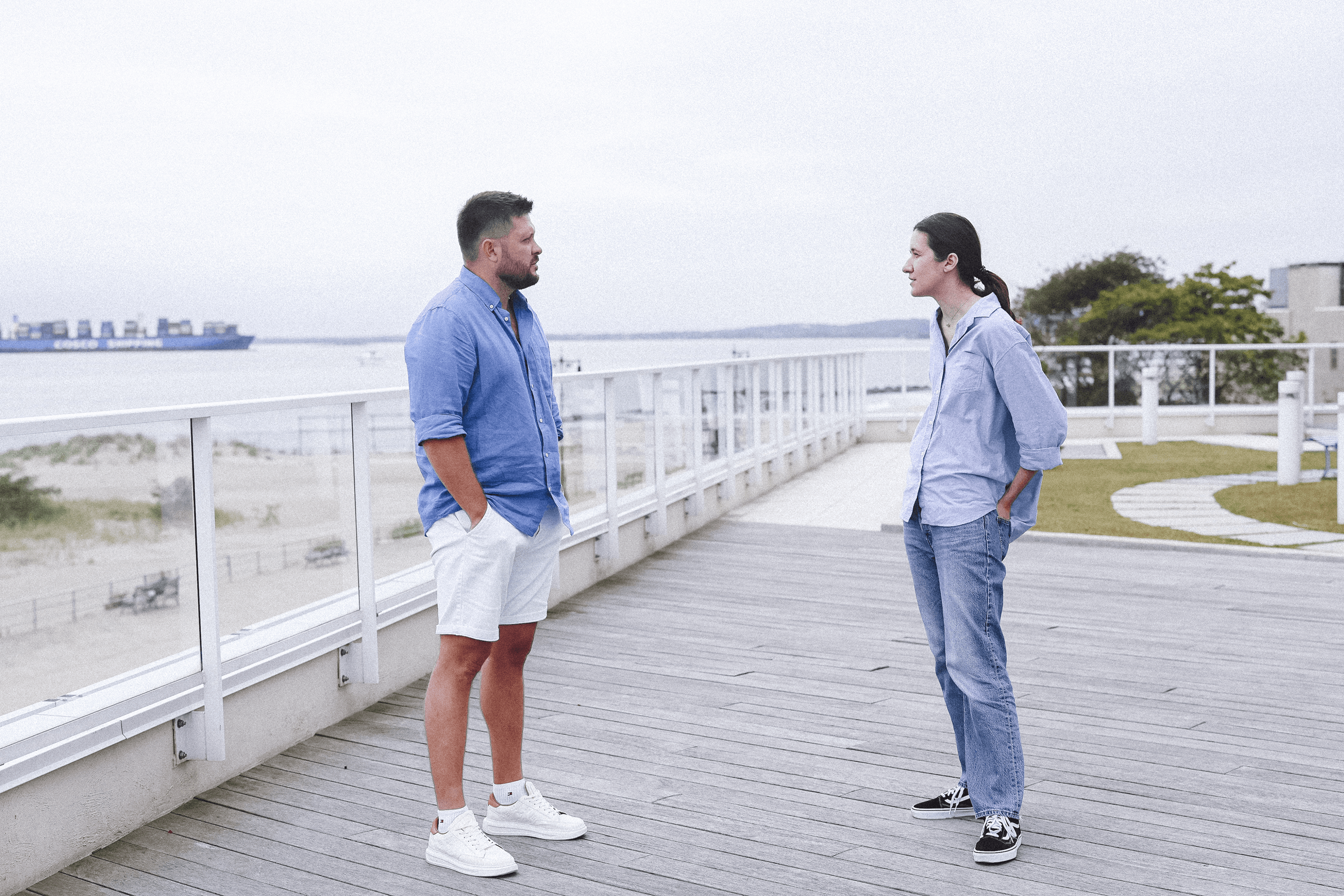
In one of your interviews, you mentioned that he didn’t pay you for several months.
Yes. Every year, from October through summer, salaries were delayed. His business was seasonal: he’d earn in the summer, spend everything, then rack up debts, and we’d end up waiting all winter. But eventually, he’d paid us what was owed.
The company had about ten vehicles. He was a native American from Long Island. His parents were wonderful people who started a charity for children. Sadly, he passed away a few years ago.
How did the idea of starting your own limo company come about?
After five years working for the limo service, I decided it was time to buy an apartment of my own. I realized I was earning enough, and it was time to stop renting. My then-wife and I found a good option and decided to buy. For that, I needed a down payment, around $30,000, which I had honestly worked hard for. But when I asked my boss to pay me the money I was owed so I could make that down payment, he kept dodging me — first he was in Miami, then he was busy. That’s when it hit me: this isn’t how employees should be treated. And that’s exactly what pushed me to the decision to start my own company. I told my friend Dmytro: “So, are you in? If you’re with me, let’s do this together. If not, I’m doing it on my own.”
Did Dmytro also work in moving?
No, he had other jobs. He would go back and forth between Ukraine and the U.S. I stayed here the whole time.
Did the owner of your old company end up paying you?
He did, paid back down to the last penny.
And you used that money for the apartment, not the business, right?
That’s right, I bought the apartment. For the business, we simply financed two cars with a five-year loan, we didn’t have our own money then. Back then, the cost of one car was $38,000 plus tax, about $41,000–42,000 each.
At that time, your former employer had 10 cars, and you and your friend were entering a competitive market with just two cars…
There were a lot of companies back then, and there are even more now. Sure, there was competition, but it wasn’t as fierce as today. He wasn’t the biggest player in the market, but in my view, he was the most successful. We had the best cars and paid better wages than other companies. Yes, sometimes he paid with delays, but Americans wouldn’t tolerate that, while for us immigrants, it was acceptable, because in the end, we did get paid. But my decision to leave wasn’t because of the delays, it was about the attitude: if I’ve done the work, I want to be paid fairly and on time. Besides, by that time, I had already received my passport and was living in the country legally.
What were the first cars you bought?
Two Lincoln MKTs. We bought them somewhere near the Canadian border.
Did you already understand how the industry worked when you started the business?
I learned a lot by watching my former boss, I took into account his mistakes. He was a natural businessman. He could convince anyone — that was definitely his strength. But he spent money recklessly, especially on repairs, because he didn’t know where or how to get good work done cheaper. We found a Ukrainian mechanic — high-quality work at a good price. He also treated drivers poorly and constantly tried to save on salaries. He didn’t trust anyone to answer phone calls, so he limited himself to handling customer requests. Everything we learned from him, we took into account and did better. Thus, in 2 or 3 years, we pulled ahead of him. We opened our company in 2014. I had one car, Dima had one, and we financed two more.
How did you find your first clients? You were just two guys from Ukraine — why did people choose you?
Because we looked professional: always neat, with spotless cars, and most importantly, we always showed up. One of the biggest problems in this industry in the U.S. is that many companies take bookings and then don’t show up. That’s where we stood out. The cars are more or less the same everywhere, but the driver’s appearance and the level of service make the difference. All of our drivers always looked great — neat, well put-together. No offence, but many Americans in this business don’t really focus on that. We bet on the quality of service and punctuality. And to this day, we operate 24/7. Fortunately, now the office handles the phone calls instead of me.
How did you find clients?
We ran ads on Google and personally visited all the local businesses — real estate agencies, law firms, golf clubs, and hotels. We dressed in suits, arrived in our cars, and introduced ourselves. We’d say: “We’re a local company, we always show up on time, our prices are no higher than the competitors', and we guarantee top-quality service.” We asked for a chance to prove ourselves. And almost everyone gave us that chance. We delivered all our promises, and we still work with many of them today.
Who are your typical clients, and how many regular clients do you have? Do they often come back?
Most of our clients are people from Wall Street, Manhattan residents who’ve reached a certain level of success. There’s also a small number of clients from Europe or Los Angeles, but the majority are New Yorkers.
As for regular clients, we have about 50, up to 60. They come back often, especially since we operate in a seasonal market. Besides those who use our services year-round, many return in the summer — some book weekly, some for a month, others for the entire season. So the return rate is quite high.
One of your clients is actress Sarah Jessica Parker.
That’s right — we drive a lot of celebrities. I drove Sarah Jessica Parker for about two years, 3 to 4 times a week during the summer. I’ve also frequently driven Jon Bon Jovi, Billy Joel, Richard Gere — weekly during the summer — and Rihanna, Beyoncé, to name just a few.
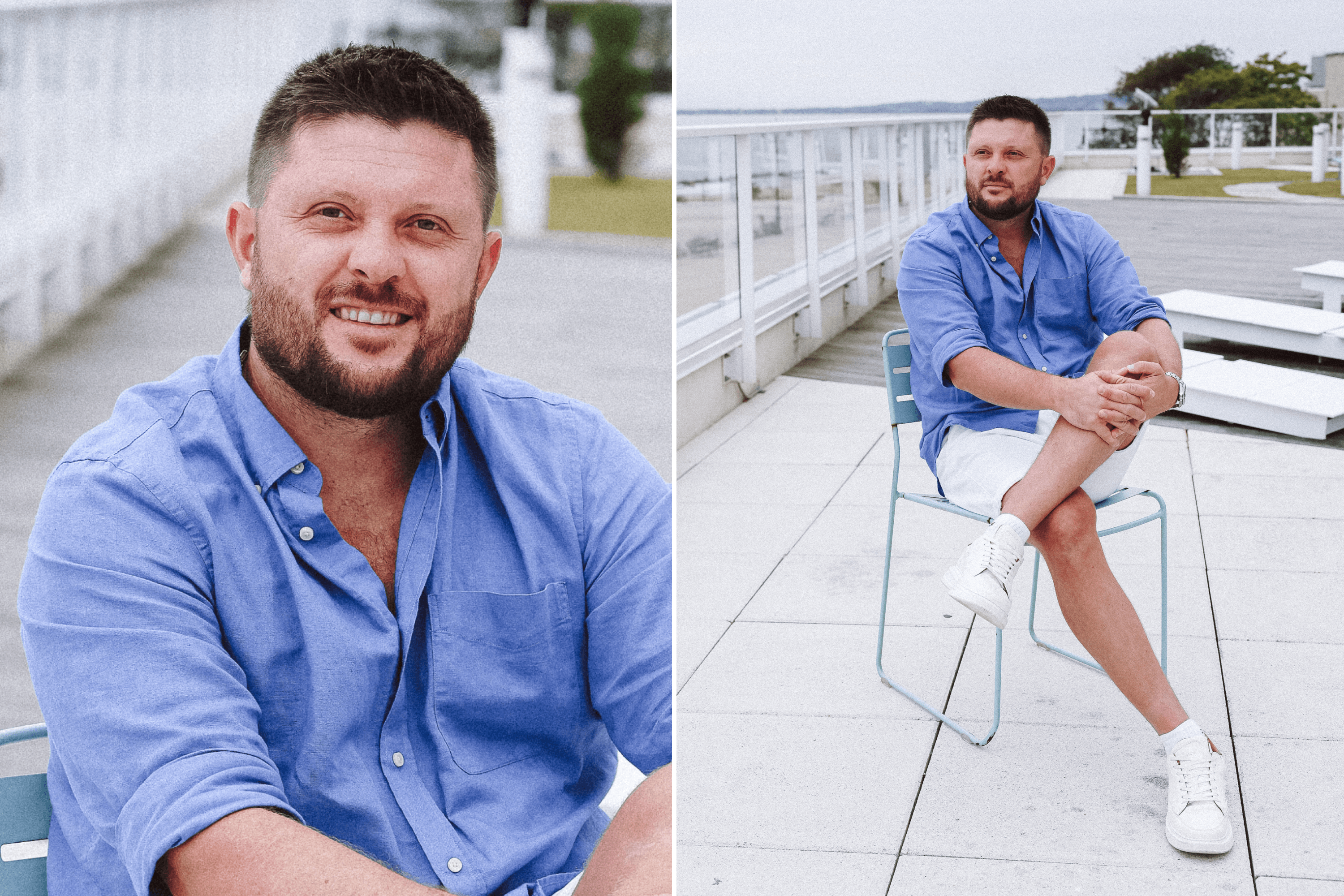
What makes them use your services?
Clients almost always come through referrals. Often, it’s hotels we partner with on a regular basis: when they host big events or have celebrities in town, they provide a list of trusted companies. Then, personal assistants or event planners choose based on reviews and past experience. It can be wedding planners, event managers, golf clubs, or hotels — the whole business runs on referrals and reputation, although advertising also plays a part.
How do they feel about the service? Do they recommend the company themselves, or do their assistants do that?
Honestly, I don’t know. All bookings go through personal assistants, so most likely they’re the ones giving recommendations. Over time, we started seeing more and more celebrities.
Did you ever take photos with any of them?
I took a photo with Hugh Grant — my wife was a big fan. And with Mike Tyson — he’s my idol. But in general, I don’t like to bother them. At the end of the day, celebrities are people like everyone else.
Were there ever moments when you thought: “Wow, I’m driving this celebrity…”?
Yes, I had that moment when I was driving Sarah Jessica Parker. I had just been in Ukraine, was series with her, and then it hit me: this guy from Zaporizhzhia drives her around. It was definitely a wow moment. But I never showed it. And I was never the type to chase them for a photo. Alec Baldwin, for example, once asked me for a cigarette, so I just turned around, handed it to him, said hello, and that was it.
How quickly has your business grown since 2014? In an interview six years ago, you mentioned you’d have 100 cars. How many do you have now?
Our growth has shifted direction. Technically, we are growing, but we made a conscious decision not to keep expanding our fleet. Right now, we consistently operate between 15 and 20 vehicles, that is optimal for our location. The business is seasonal, and in winter, even this number of cars isn’t always fully booked. Instead, we are growing through partnerships with other companies — trusted ones, fully insured, in whom we have as much confidence as in ourselves. This allows us to scale without needing to buy more vehicles.
During the COVID pandemic, I went to Miami and brought a few cars down there, but I quickly realized it wasn’t the market for us. The market there is too competitive, and the prices are three times lower than here. So we decided to stay in New York and not chase volume. That same year, we also came up with the idea for a second business, and we’ve already been successful in that direction.
Can you give a rough idea of the pricing? Say, if I wanted a limo for the day?
We charge by the hour. A sedan runs $80 an hour, an SUV is $100, a 14-passenger limo is $220, and a 25-passenger bus is $250 an hour. We have a 6-hour minimum for bookings. For transfers, from Manhattan to the Hamptons, for instance, that’ll typically cost around $500.
Where did the idea for wine tours come from?
It all started with the demand — people would call from time to time and inquire. I realized this was a completely different direction, a niche of its own. And when COVID hit and I had some time, I decided to launch it. Business-wise, the timing wasn’t exactly ideal, but it allowed us to prepare everything properly.
Our wine tours cover three states — New York, New Jersey, and Connecticut. We take guests to wineries, mainly in the North Fork area, where you’ll find around 30 vineyards, each offering tastings, live music, and a vibrant atmosphere. We created a separate website, registered a new company, and started offering custom tours, from small groups of two people to larger groups of up to 50 guests.
What is the revenue of your company?
The limousine company brings in about $3.5 million, with a profit margin of around 40%. That allows us to comfortably cover all our needs. It is still early days for the wine tour business, but it’s picking up. I’d say in another five years and it should reach similar figures.
What is the potential ceiling for your companies?
It isn’t limited if you expand beyond the local market. We’re a local company based in the Hamptons. The market in New York City is much more competitive and complex — parking is more expensive, and it’s a tougher place to operate. But I know companies that reach up to $100 million in revenue.
What are the prices for your wine tours?
We offer either hourly rates or per-person pricing. For instance, if a group of 10 wants to go on a six-hour tour visiting three wineries with tastings, I usually charge per person — it typically comes to about $150 to $200 per person, tastings included. We don’t manipulate our prices. We stay aligned with the market: we’re in regular contact with competitors. So overall, pricing is consistent across the industry.
In Canada, there’s a tendency for companies to stick with the same partners for 25 years or more — even if things go wrong, they rarely switch. How does it work in the US, and how do you build trust?
Same here. Once a company has an established relationship, it’s extremely difficult to win them over. For example, after ten years, I still haven’t been able to land one particular golf club. I show up every year, they know us, they know the brand, they’ve seen our vehicles. But each time the answer is the same: We’re happy with our current partner and we’re not looking to switch. Your chance comes either when a company raises its prices significantly or makes a serious mistake. That’s when they might give us a try. It’s not easy when you are the youngest company in the market, but we’ve gradually earned trust. And we’re still working on that. There are still some businesses we haven’t been able to partner with yet.

Are the clients mostly the same, just moving between the same companies?
Pretty much yes. The drivers might be different, and the discipline within the companies can vary. The vehicles might be spotless or not so much, but the services are quite similar.
In 2018, you decided to diversify your business, and in addition to limousines and wine tours, you started building houses. What is this line of work about?
Yes, it was both diversification and a new business that I really enjoy. At one point, I asked myself: “Who are the wealthiest people we’re driving, aside from older tourists?” It turned out to be brokers and builders. Then I asked myself another question: “Why aren’t we builders ourselves? Why aren’t we building?” That’s how it started — two friends and I teamed up and launched our first project in 2018.
Who are these friends you partnered with?
My business partner Dima and our friend Kostya, who’s been in construction his entire life. The three of us each invested about $330,000 to $340,000. We initially took out a $1.2 million loan, but due to COVID, we couldn’t pay it off on time and had to refinance it to $2.2 million. We came in as equal partners, each contributing the same amount. We bought the land. Since entering this business isn’t cheap, we took out a loan specifically for the construction.
Our first house was about 450 square metres, with five bedrooms and six bathrooms. At the time, it felt massive to me and I genuinely loved it. But then the pandemic shut everything down, construction stalled, and we weren’t able to finish the house before the loan deadline. We hit plenty of bumps along the way, learned a lot, refinanced again, and poured in even more money. In the end, though, we did sell the house and even made a profit. Since, due to COVID, real estate prices surged, we ended up earning more than we’d originally planned. That inspired us to keep going, and since then, we’ve completed three more projects.
So you’ve already completed four building projects?
That’s right. And we’re currently planning our fifth.
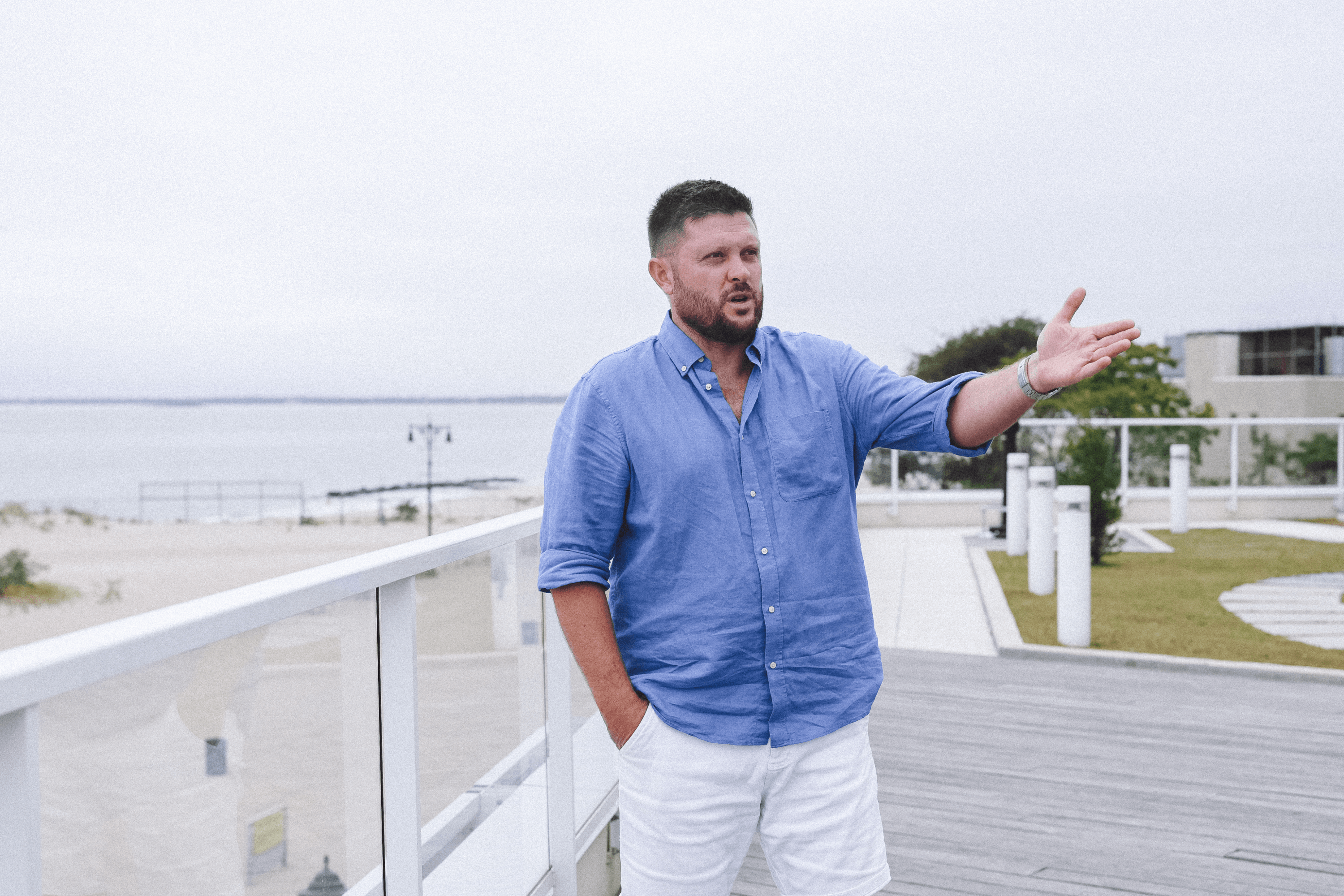
Do you use materials from Ukraine in your construction?
Yes, we do, partly. We install Canadian kitchens, but they’re made by a friend of mine from Zaporizhzhia — he runs his own manufacturing business in Toronto and often comes to all of our sites. And all the windows in the houses we’ve built so far come from Kharkiv.
How much do you normally invest, and what kind of return do you typically expect?
On average, if we invest $5 million of our own capital, we’re looking for a return of roughly $3 to $3.5 million.
Sounds like it’s quite a bit more profitable than the limo service?
It is. But the limousine business is a daily operation. We have 20 to 25 drivers working, and we also have a call centre in Zaporizhzhia, where four team members handle calls and emails 24 hours a day, working in two shifts.
Are your drivers mostly from Ukraine, from Zaporizhzhia too?
At first, they were exclusively from Zaporizhzhia. Later, we started hiring people of different backgrounds. Now, we also have some American drivers. At the moment, about five of our drivers are from Zaporizhzhia.
How much do you pay your drivers per hour, and how does that compare to the minimum wage?
We pay $24 an hour — that’s our company minimum. That figure is before a 25% personal tax deduction. For comparison, I believe the minimum wage in New York is around $15 an hour, so we pay well above that. Our basic requirements are simple — conversational English and a valid New York driver’s license. Perfect English isn’t a must.
You and Dmytro have equal shares in the business — 50/50, which is considered quite risky. You’ve been working together for over ten years. What is your advice on building a strong partnership?
Yes, it is risky, but at the time, we didn’t think about that. We just wanted to get away from a boss who wasn’t paying us and build something stable. Over time, we both started families, bought homes and apartments. As our financial responsibilities grew, there wasn’t much room for second-guessing. Of course, we’ve had arguments and disagreements. But without a partner, I’m not sure we would’ve made it this far. I always say there are all kinds of partners — I’ve had less successful experiences, too. But Dmytro and I are very different, and that’s probably what keeps us going. He’s the numbers guy and the practical one; I’m more of a dreamer and an idea person. I handle negotiations and recruiting drivers, while Dmytro makes sure the numbers add up and the cars are maintained. That’s roughly how it works.
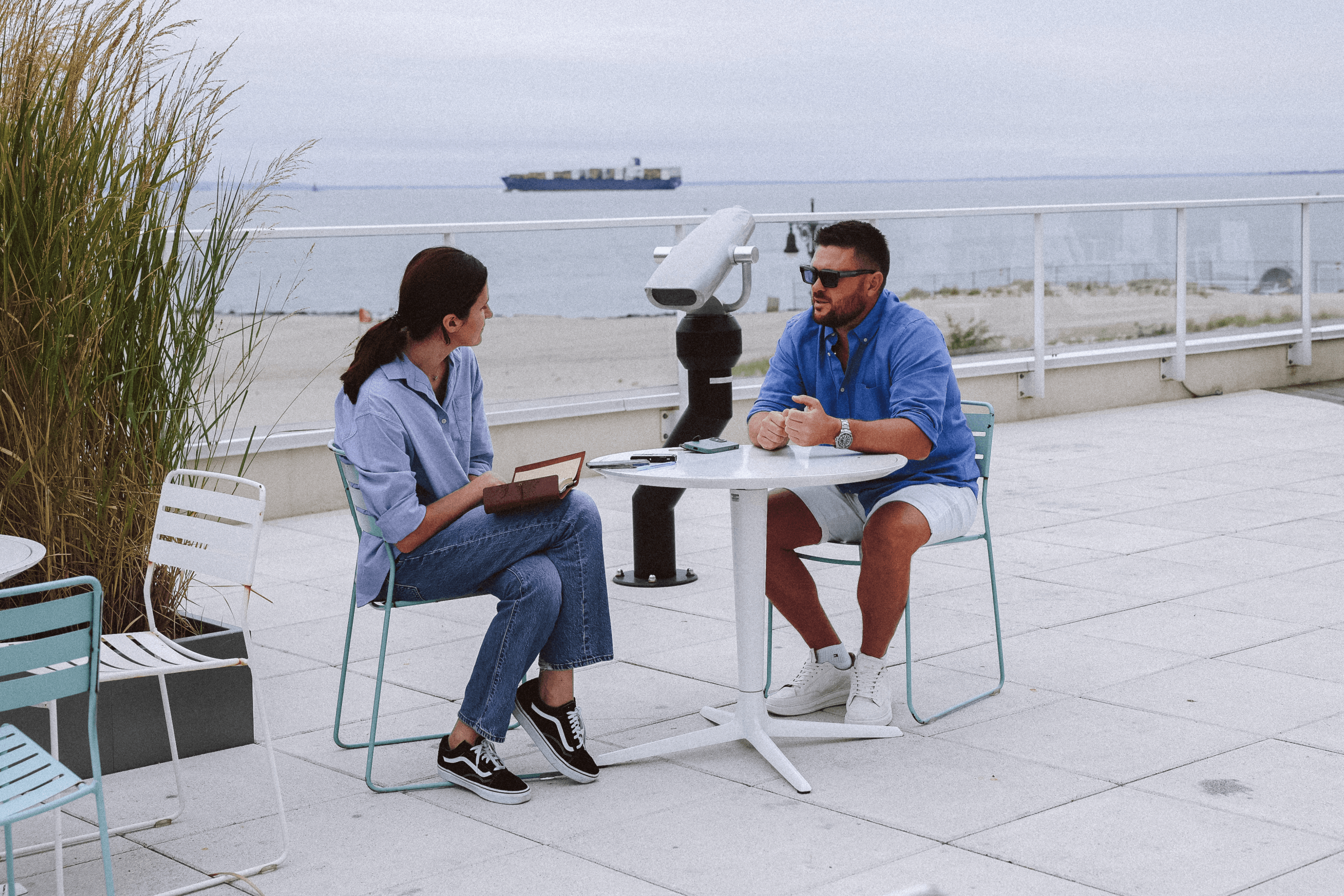
Are you currently supporting Zaporizhzhia or people from there?
We’ve always helped. I’m part of a New York business club with many Ukrainians in it. At the start of the full-scale war, we were sending not only money, but also body armour, drones, anything we could. And we continue to support — we donate, organize events, and some of our friends have hosted charity birthday parties for orphanages.
We had plans to grow our involvement in Zaporizhzhia, to help create jobs and opportunities there. But right now, our hands are tied. We’re waiting for the day when we can continue what we started.
Why do you think you were able to integrate and build a successful business here?
I think it’s because I came here with a clear goal. I knew I didn’t want to work “for someone else”. I was ready to work hard. I never planned to go into construction, and now it’s a big part of what we do. I guess it’s just part of my nature — that need to prove to myself that I can do it.
We come here “hungry for money”, as they say here. We look for jobs that pay more per hour. In the limo business, for example, there are tips, sometimes $100, sometimes $500, and the largest tip I ever received was $1,500. It doesn’t happen every day, but it does happen. On average, I’d say it’s about $100 a day in tips. We work long hours and we don’t stop. That’s just part of who we are, we push ourselves to the limit.
What personal qualities do you think are essential?
First of all, having a clear goal. Second — resilience. I used to sleep in a basement, worked three jobs, sometimes without pay. Now I see some people arriving here and saying: “Oh, so money doesn’t grow on trees here? Well then, I’m not interested”. We weren’t like that. We came here to work.
What’s next?
The limo business is still growing. I want to expand the wine tours — bring in more clients, add new routes. We’re also continuing to grow our construction business. It’s not a cheap industry to be in these days — building a house costs around $5 to $6 million. But we’re pressing ahead. I’m always looking for new opportunities, especially in construction, but I’m open to other ideas too.
